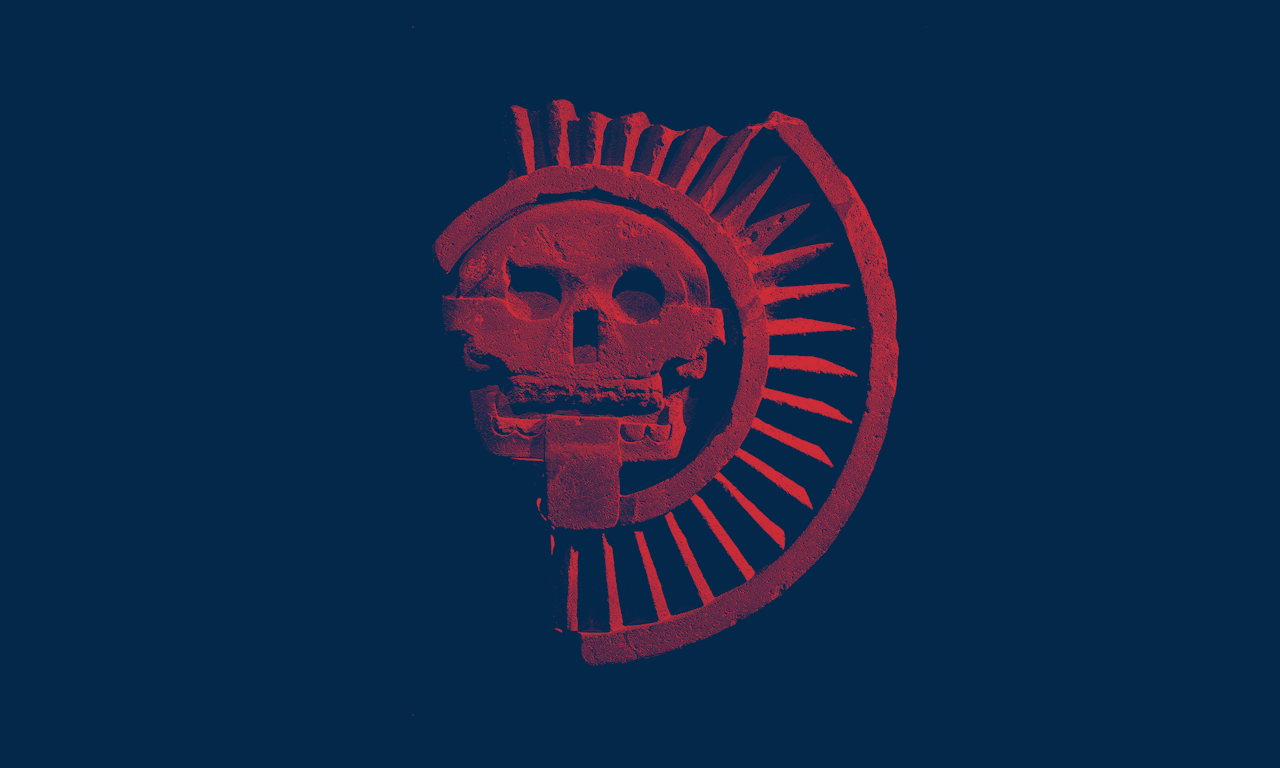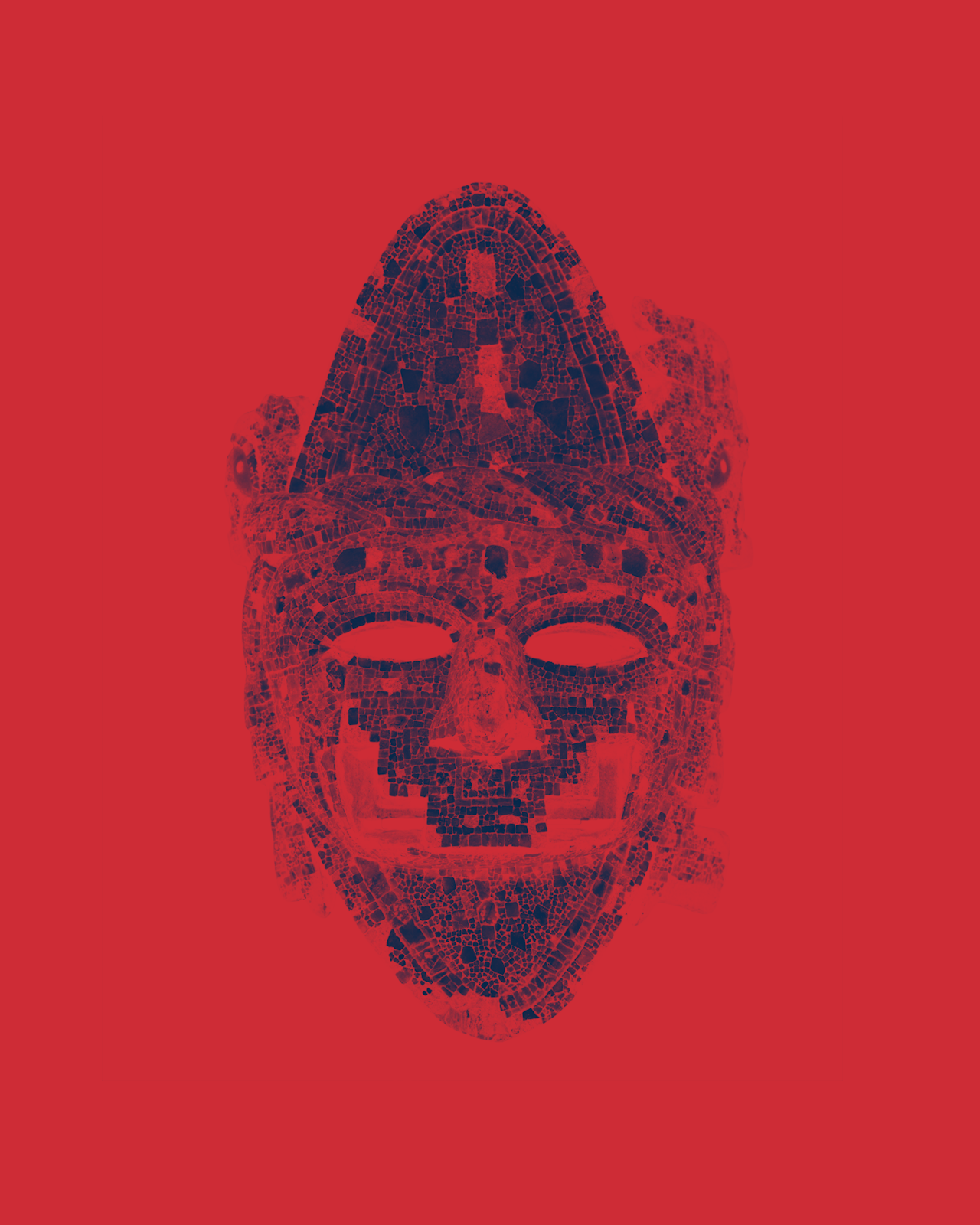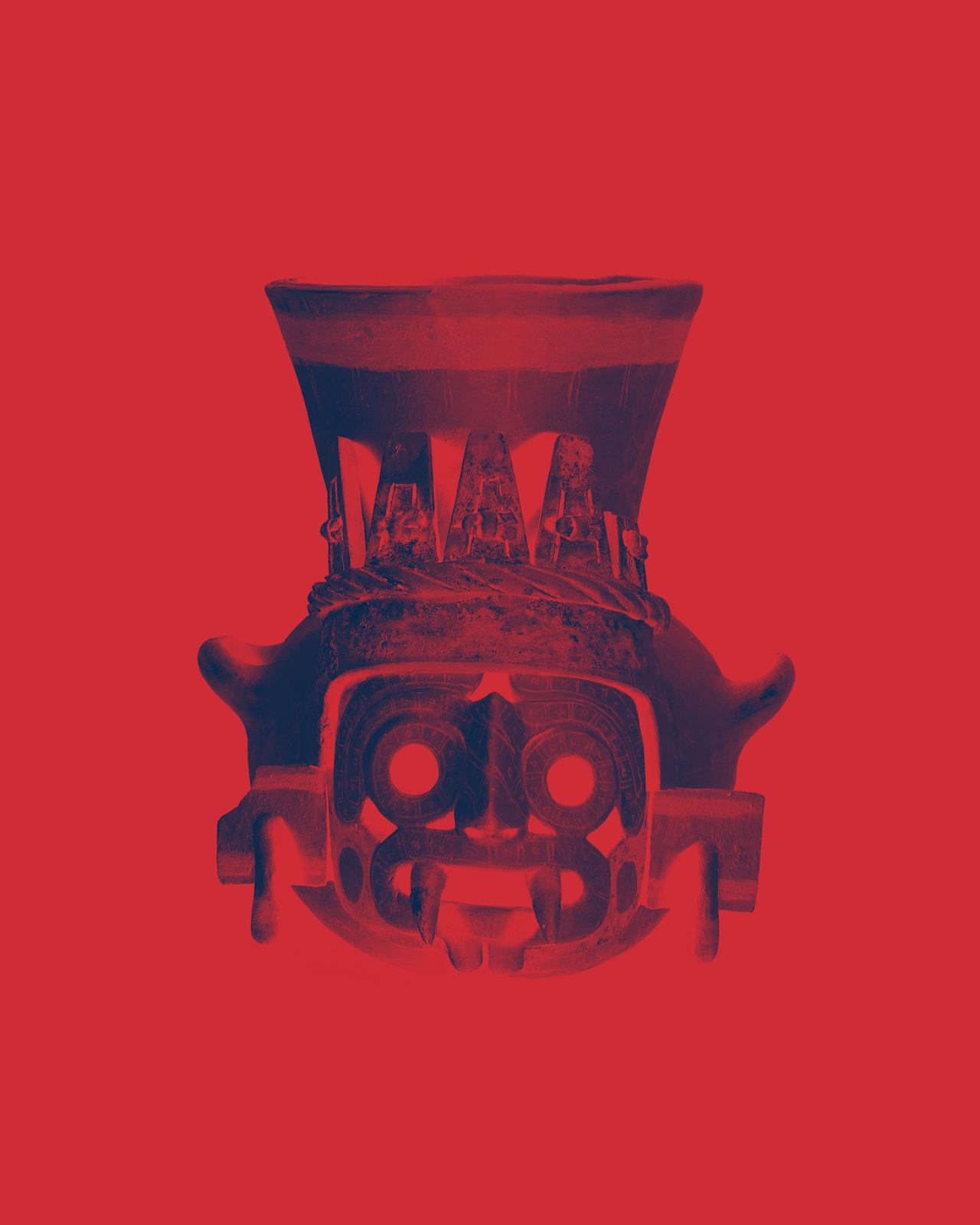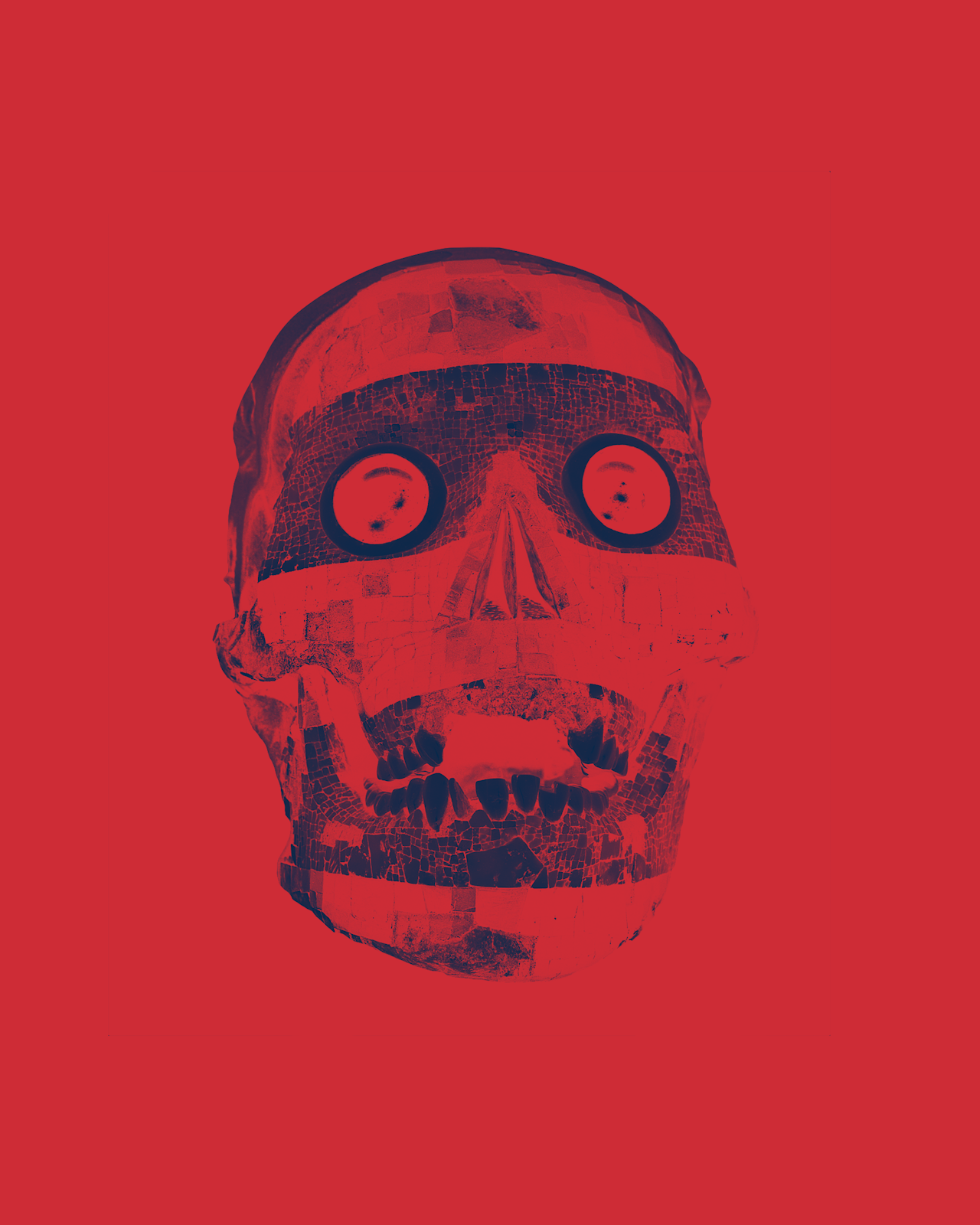The world was supposed to have ended in 2012, as foretold by a Mayan prophecy that, in the end, only prophesied that the Mayans would need to buy a new calendar. As the prediction went, our solar system would align with the black hole at the center of the galaxy. The magnetic poles would sweep and switch and falter, leaving the atmosphere to be stripped away by a devastating solar wind; the enigmatic shadow planet Nibiru would collide into ours and turn solid ground into a spray of magma drifting through space.
It didn’t happen. But the prophecies will come back, before long. Isn’t every generation convinced it’ll be the last? People seem to enjoy imagining that they’ll live to see the curtains close on history, but it’s more than just enjoyment; a sense of finality seems to be built into our experience of the whole strange, senseless show that surrounds us. Either you die in the world, another speck to be mourned and then forgotten, or the world dies around you. Unknown planets or rising sea levels, whatever helps you imagine an ending.
Before the Mayan apocalypse, it was the year 2000 that was supposed to kill us all. Aside from the Y2K computer bug that failed to destroy all our soaring dial-up technology, mass-media preachers like Ed Dobson, Jerry Falwell, and Left Behind authors Tim LaHaye and Jerry B. Jenkins confidently expected the final judgement of God to arrive in time for the new year’s celebrations. In turn they were drawing on a legacy of bimillennial fascination that includes medieval Catholic theologians, Marian apparitions, invented Nostradamuses, the Kabbalistic calculations of Isaac Newton, and cultists scattered across the centuries.
Jehovah’s Witnesses have separately predicted that the world would end in 1914, 1915, 1918, 1920, 1925, 1941, 1975, 1994, and 1997. Various preachers in Britain and America spent most of the 19th century convincing their small bands of followers that the world was shortly to cease existence, extrapolating their figures from the dimensions of Noah’s Ark or the tent of the Tabernacle, watching the skies for comets, waiting for the ocean to boil, reading the newspapers to see when the Antichrist would reveal himself. And it never happened, not even once.
But aren’t the oceans boiling? As the air fills with carbon dioxide, the seas are turning to acid mire, a soup of plastic particles and dead coral, where the fish are all dying and only the tentacled things survive. Revelation, chapter eight: “A great mountain burning with fire was cast into the sea: and the third part of the sea became blood; and the third part of the creatures which were in the sea, and had life, died.” Doesn’t Donald Trump, a leering Antichrist in bronzer and self-regard, glower from the front page of every paper? And as warships surround a North Korea bristling with missiles, could the sky not soon be full of dazzling, falling stars, and then empty forever? Isn’t the end of the world really, actually, genuinely nigh? Aren’t we watching it happen, broadcast from our TV screens, right now?
For its critics, this sense of a looming end is an expression of the same spirit that made all those bloated celebrity prophets predict the Second Coming around the year 2000. Panicked jeremiads about climate change are just another form of religious nonsense — so, for some, is Marxism, with its deterministic charts of universal history. The philosopher Tom Whyman, for instance, wrote earlier this year that ���we’ve successfully secularized the End Times.” It’s all a kind of wishful thinking, he argues; everyone wants to think that the end of the world is imminent, because it means that all the messy contingencies of life will finally become settled, and this desire is given form and propulsion by a still-dominant Judeo-Christian-Islamic conception of linear time. Once we expected to hear trumpets and angels; now it’s just the wandering honk of a puffed-up president announcing to the world that he’s pushing the button. But it’s the same thing.
The Aztec apocalypse is nothing like the Christian one. It comes out of an unimaginably different history and society to the world of Greece and Rome. But it’s a lot like ours. The collision with Nibiru or devastating magnetic pole shift might have a distinctly monotheistic tang, but it’s possible that the Aztecs might see in our worries over anthropogenic climate change, economic collapse, and senseless nuclear war something strangely familiar. Instead of considering apocalypses through their literary and conceptual lineages, we could think about them instead in terms of what kind of society gave birth to them. How much do modern Westerners really have in common with prophets of the Old and New Testaments like Ezekiel or John of Patmos? Might we be more like Itzcoatl or Huitzilihuitl, even if we’re less likely to know who they are?Our capitalist modernity isn’t a Mediterranean modernity, but a Mesoamerican one. The Aztecs, those strange and heartless people with their stepped pyramids and their vast urban civilization that never came out of the Stone Age or invented the wheel, are our contemporaries.
Original Aztec sources are patchy — most of their beautiful codices were destroyed during the Spanish conquests in the early 16th century — and tend to contradict each other, but what makes the Aztec apocalypse so different to that of any other mythology, and so similar to the one we face now, is that they believed it had already happened.
This world is not the first. There were four that came before it and were destroyed in turn, all in the usual fashion — usual, that is, for end-of-the-world stories. Each was made by and contested over by the two gods, Tezcatlipoca and Quetzalcoatl, as a series of staging-grounds for their constant battles, two cosmic children bickering over a toy. In the first, Tezcatlipoca turned himself into the sun, and a jealous Quetzalcoatl knocked him out of the sky with his club; in revenge, Tezcatlipoca set jaguars loose to wipe out all its people. Together the gods built a new race of humans, but they stopped worshipping their creators, so Tezcatlipoca turned them all into monkeys, and Quetzalcoatl, who had loved them for all their sins, destroyed them in a fit of spite with a hurricane. Tezcatlipoca connived the gods Tlaloc and Chalchiuhtlicue into destroying the next two with fire and with floods. The fifth one, ours, will be destroyed by earthquakes. But in every other respect it’s entirely different from the ones that came before.
After the creation and destruction of four worlds, the universe had exhausted itself. We live in the shadow of those real words; their echo, their chalk outline. In each of the four previous worlds, humanity was newly created by the gods. Present-day humans were not: we are the living dead. After the destruction of the fourth world, it lay in darkness for fifty years, until Quetzalcoatl journeyed into Mictlan, the Aztec hell, and reanimated the bones of the dead. In the four previous worlds, the sun was a living god. In ours, it’s a dead one. To build a new sun for this worn-out earth required a blood sacrifice: The gods gathered in the eternal darkness and built a fire, and their weakest deity, Nanahuatzin, a crippled god covered in sores, leapt into the center of the flames, and the sun was born.
But it was a weak sun, and it wouldn’t move. All the other gods, one after another, immolated themselves in the fire to bring the dawn, but it’s still not enough. The sun needs more sacrifices; it needs ours. This is why the Aztec priests slaughtered people by the hundreds, cutting out their hearts and throwing their corpses down the temple steps. This blood and murder was the only thing that kept the sun rising each morning; if they stopped even for a day, it would go black and wither to nothing in the sky, and without its light the earth would harden and crack and fall apart. And some day, this will happen: it’s earthquakes that will destroy us all, and when it crumbles there will be nothing left.
The fourth world was the last; we’re living in something else. A half-world, a mockery, a reality sustained only through death and suffering. The first four worlds were created by the gods and destroyed according to their wills or because of their squabbles, just like the four Yugas of Hinduism, or the creation of the Abrahamic God, whose Judgement Day will come whenever He sees fit. Our world is being kept alive only through human activity; it’s a world into which we have been abandoned. The Aztecs were stone-age existentialists, trembling before their misbegotten freedom. This is a theology for the anthropocene — our present era, in which biological and geological processes are subordinated to human activity, in which the earth that preceded us for four billion years is finally, devastatingly in our hands, to choke with toxic emissions or sear with nuclear bombs. But modern society isn’t treading new ground here: the Aztecs came first, five hundred years ago. And their response was to kill.
Most everyone knows about the Aztec sun-sacrifices, the mass daily executions carried out by the priests, but ritual human slaughter was everywhere in their society. Sometimes children were drowned, sometimes women were killed as they danced, sometimes people were burned alive, or shot with arrows, or flayed, or eaten. Hundreds of thousands of people died every year. At the same time, these were the same people whose emperors were all poets, whose young people went out dancing every night, and whose cities were vast gardens filled with flowers, butterflies, and hummingbirds. This might be the reason Aztec human sacrifice is still so horrifying — we’re much more likely to forgive mass killings if we can say for certain why they happened. The Romans killed thousands in their circuses, and in the 21st century we still watch death — real or feigned — for entertainment; it’s extreme but not so different. When the Spanish came to Mexico, they were horrified by the skulls piled up by the temples — but then they killed everyone, and we understand wars of profit and extermination too. But like any mirror, the Aztecs seem to show us everything backwards.
The Aztecs were stone-age existentialists, trembling before their misbegotten freedom.
Still, you can feel traces today. In the neoliberal economic doctrine that’s still dominant across most of the world, something strangely similar is happening. All the welfare institutions that ameliorate capitalism’s tendencies to extreme wealth and extreme poverty have to be destroyed, for the good of the economy. People die from this — in Britain, up to 30,000 people may have died in one year as a result of cuts to health and social care, and that’s in a prosperous Western country. In the United States, a faltering band-aid mechanism like Obamacare has to be wrenched off, with the excuse that it’s being replaced with market pricings, which are natural and proper and, in their own way, fair. But it’s all for nothing. The economics behind neoliberalism are nonsense, but the prophets — these days, drab old thinkers like Friedrich Hayek or Milton Friedman — have warned us that unless they’re followed, we’ll open up the road to serfdom. Ask a liberal economist why millions have to suffer, forced to live in drudgery under late capitalism’s dimming sun, and something horrifying will happen. A weak, indulgent, condescending smile will leak across their face, and they’ll say: that’s just how the market works. An echo of the Aztec priest, dagger held high, kindly telling his victim that his heart has to be pulled out from his chest, because that’s just how the sun works.
But neoliberalism really does work, it just doesn’t do what it’s supposed to. It might not be any good for the population at large, but it has facilitated a massive upward redistribution of wealth; the poor are scrubbed clean of everything, and the rich drink it up. Class power creates both the excess of cruelty and the mythic ideology to justify it. Marxist writers like Eric Wolf have tried to find something similar operating among the Aztecs: Human sacrifice cemented the rule of the aristocratic elites — they were believed to literally gain their powers through eating the sacrificial victims — while keeping the underclasses in line and the conquered peoples in terror. But all contemporaneous societies were class-based and repressive; it doesn’t begin to explain the prescient nihilism of their theology. Something else might.
The Aztecs built an extraordinarily sophisticated state. Their capital, Tenochtitlan, whose ruins still poke haphazardly through Mexico City, might have been the largest city outside China when Europeans first made contact; it was bigger than Paris and Naples combined, and five times bigger than London. Stretching across the Mexican highlands, their empire had, in 150 years, conquered or achieved political dominance over very nearly their entire known world, bounded by impassable mountains to the west and stifling jungle to the east. Without any major enemies left to fight, they found new ways of securing captives for sacrifice: the “flower wars” were a permanent, ritual war against neighboring city-states, in which the armies would meet at an agreed place and fight to capture as many enemy soldiers as possible.
The Roman Empire could never defeat their eternal enemy in Persia, and the dynastic Egyptians were periodically overwhelmed by Semitic tribes to the north, but until the day the Spanish arrived the Aztec monarchs were presumptive kings of absolutely everything under the sun. The only really comparable situation is the one we live under now — the unlimited empire of liberal capitalism, a scurrying hive of private interests held together under an American military power without horizon. We have our own flower wars. The United States and Russia are fighting each other in Syria — never directly, but through their proxies, so that only Syrians suffer, just as they did in Afghanistan, and Latin America, and Vietnam, and Korea. Wars, like Reagan’s attack on Granada or Trump’s on a Syrian airbase, are fought for public consumption. There is a pathology of the end of the world: dominance, ritualization, reification, and massacre.
The Aztecs were not capitalists, but their economy has some spooky correspondences with ours. While they had a centralized state, there was also an emerging free market in sacrifices, and a significant degree of social mobility: every Aztec subject was trained for war, and you could rise through society by bringing in captives for slaughter. The Oxford historian Alan Knight describes it as “a gigantic ‘potlatch state,’ a state predicated on the collection, redistribution and conspicuous consumption of a vast quantity of diverse goods. Sacrifice represented a hypertrophied form of potlatch, with humans playing the part elsewhere reserved for pigs.” The potlatch is a custom practiced by indigenous peoples further up in the Pacific Northwest, in which indigenous Americans ceremonially exchange and then spectacularly destroyed vast quantities of goods — blankets, canoes, skins, but most of all food — in a show of wealth and plenitude. In the sophisticated class society of the Aztecs, the grand triumphant waste was in human lives.
We are, after all, assembled from the bones of four dead universes. We were dead to begin with. Perched on the end of history, the Aztecs beheld a dead reality in which life becomes lifeless, to be circulated and exchanged. Four-and-a-half centuries later, Marx saw the same processes in capitalism. He describes it in Wage Labor and Capital: “The putting of labour-power into action — i.e., work — is the active expression of the labourer's own life. And this life activity he sells to another person [...] He does not count the labour itself as a part of his life; it is rather a sacrifice of his life.” (Emphasis mine.) Workers are cut off from their own labour and from themselves by a production process in which they are not ends but means, part of a giant machinery that exists to satisfy the demands not of human life but of “dead labor,” capital. From his 1844 Manuscripts: “It estranges from man his own body, as well as external nature and his spiritual aspect, his human aspect.” His labour-power becomes a commodity; something to be bought and sold in quantifiable amounts, something inert. The worker under capitalism, like the captive walking up the temple steps, is consecrated to death.
We are, after all, assembled from the bones of four dead universes.
The Aztec world ended. When the Spanish came they found an empire of 25 million people; by the time they left only one million remained. Its people were killed with swords, guns, fire, famine, disease, and work. The beautiful garden-city of Tenochtitlan was torn down, a European fort built in its place. Sacrifices were no longer offered to the sun, and somehow it still kept rising every day. You can laugh at their credulity — they really thought the sun would stop rising, and look, everything’s still here! But the end of the Aztec world was dispersed throughout time, until it became isomorphic with the world itself.
Their disaster was not waiting for us in the future, a monumental bookend to history, like the Judgement Day of the people who destroyed them — they lived within it, in the ruins of a real world that died with the gods. This is the cosmology of the great German philosopher Walter Benjamin: to apprehend reality we should make “no reflections on the future of bourgeois society;” rather than a series of events leading towards an uncertain end, his Angel of History stands to face the past and sees only “one single catastrophe, which unceasingly piles rubble on top of rubble and hurls it before his feet.”
We exist in that rubble. The Aztec Empire conquered its world, strip-mined its future, and turned human populations into fungible objects. Contemporary society too has nowhere else to go: capital has saturated the earth, and outer space is a void. Our world, with the monstrous totality of its stability and order, is relentlessly producing its own destruction. In fantasies of black holes and the wrath of God; in the actuality of an atmosphere flooded with carbon dioxide and a biosphere denuded of all life. We missed the apocalypse while we were waiting for it to take place. Baudrillard writes: “Everything has already become nuclear, faraway, vaporized. The explosion has already occurred.” Capitalism built a corpse-world. Its sun keeps rising every morning, whatever we do, but it’s growing hotter in the sky; poisoning the seas, frizzling farmlands to desert, carrying out Tezcatlipoca’s last act of revenge.




